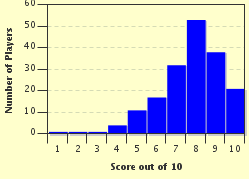Quiz Answer Key and Fun Facts
1. Which of the following artists, nicknamed "Cash", made his name drawing cartoons and dogs in human situations?
2. H.R. Giger was a Swiss painter, sculptor and costume designer, and artist who created the monster in which 1979 Ridley Scott sci-fi horror film?
3. Which artist, known for his works of gigantic proportions, also made this statue of General Philip Sheridan?
4. Which of the following Dutch painters is credited as being the creator of the art movement known "Neoplasticism" around 1917?
5. American artist Mabel Dwight (1875-1955) was considered one of the foremost experts in which of the following art forms?
6. "The Luncheon on the Grass" (1863) is one of the most famous pieces by which of the following masters of impressionism?
7. One of the most influential artists in the 20th century, which of these women is often recognized as "The Mother of American Modernism"?
8. French artist Marcel Duchamp is one of the foremost experts in the style known as 'rococo'.
9. Most of Norman Rockwell's illustrations would best be described as examples of cubism.
10. If I someone describes you as "Rubenesque", what are they saying about you?
Source: Author
dcpddc478
This quiz was reviewed by FunTrivia editor
bloomsby before going online.
Any errors found in FunTrivia content are routinely corrected through our feedback system.


